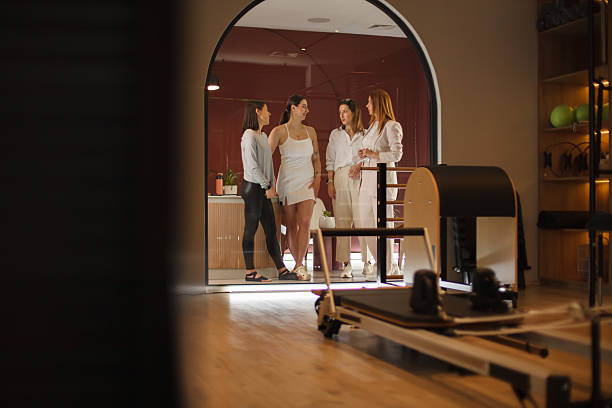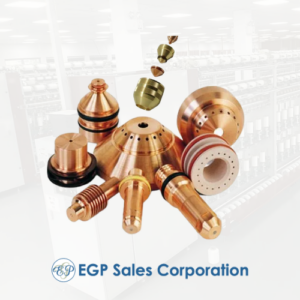Benefits of Hip Abduction in Your Pilates Routine
Pilates has long been known for improving strength, flexibility, and posture. But when you add Abduction Hip exercises into your Pilates routine, you unlock a new level of balance, stability, and muscle control. Hip abduction movements—where you move the leg away from the body’s centre line—target the outer hips and glutes, areas that often get overlooked in traditional workouts. These exercises can bring remarkable changes to the way your hips function, helping with posture, daily movement, and even injury prevention.
In this article, we’ll look at what hip abduction means in Pilates, why it’s so valuable, and how it can make a lasting difference to your body’s strength and mobility.
What Is Hip Abduction in Pilates?
Hip abduction simply means moving your leg away from your body’s midline. Think of lifting your leg out to the side while standing, or pressing against resistance while lying on your side. In Pilates, hip abduction can be done using body weight, resistance bands, or Pilates equipment like the Reformer or Cadillac.
The movement may seem small, but it plays a major role in how you move and support your body. The main muscles involved are the gluteus medius and minimus—two smaller but crucial muscles that sit on the outer hip. When these are strong, they stabilise the pelvis, support proper alignment, and reduce strain on the knees and lower back.
Why Hip Abduction Is Important in Pilates
When practising Pilates, you’re not only building strength but also improving how the muscles work together. Hip abduction is a key part of this because it connects your lower body to your core. The movement teaches your body to stabilise the pelvis and spine while controlling leg motion, which is a core goal of Pilates.
Many people spend long hours sitting, which can lead to weak glute muscles and tight hip flexors. This imbalance often causes hip pain, lower back issues, or even knee discomfort. By including hip abduction work in Pilates, you help re-train these muscles to support your posture and joint health.
Strong hip abductors also play an important role in balance and coordination. Whether you’re walking, climbing stairs, or standing on one leg, your outer hips are working hard behind the scenes. Regular Pilates sessions that focus on hip abduction improve your body’s ability to stay steady and aligned during movement.
The Key Benefits of Adding Hip Abduction Exercises to Your Pilates Routine
Let’s look more closely at the key benefits you can expect from adding hip abduction work into your Pilates sessions.
- Improves Hip Stability and Pelvic Alignment
The hips are the foundation of most body movements. When your outer hip muscles are weak, it becomes difficult to keep your pelvis stable, especially during single-leg exercises. Hip abduction exercises train these muscles to hold your pelvis level and aligned, which helps prevent strain on your back and legs.
In Pilates, this translates to better form in movements such as side-lying leg lifts, bridges, and standing balance exercises. Over time, you’ll notice that your movements feel smoother and more controlled.
- Strengthens Glute Muscles
Many people associate Pilates mainly with core work, but the glutes are just as essential for proper body function. Hip abduction directly targets the gluteus medius and minimus—muscles often neglected in other workouts.
Stronger glutes not only give shape and support to your hips but also improve the way your body moves as a whole. This can help you avoid overusing other muscles like the hamstrings and lower back, reducing the risk of strain or injury.
- Reduces Lower Back and Knee Pain
Weak hip abductors often contribute to knee and lower back problems. When the outer hip muscles can’t stabilise the pelvis correctly, the knees and spine take on extra pressure.
Adding hip abduction work in Pilates helps to correct this imbalance. By building strength in the outer hips, you support proper joint alignment and relieve unnecessary tension on other parts of the body. This is especially helpful for people who sit for long hours or have recurring back pain.
- Improves Balance and Coordination
Pilates already focuses on balance and control, and hip abduction takes this one step further. The movement forces your stabilising muscles to engage deeply, training your body to remain steady during challenging positions.
Better balance can make everyday activities easier, from walking on uneven ground to standing for long periods. It can also improve your performance in sports and other exercises that depend on lower-body strength and coordination.
- Supports Better Posture
Good posture begins with the hips and core. When your hip abductors are weak, it can lead to the pelvis tipping forward or sideways, which affects the entire spine. Strengthening these muscles through Pilates helps maintain an even, neutral alignment throughout your body.
Over time, you’ll stand taller, walk more efficiently, and experience less tension in the neck and shoulders.
- Aids in Injury Prevention
One of the hidden benefits of hip abduction exercises is their role in preventing injury. Many sports and daily movements rely on hip stability. Weak abductors make you more prone to sprains, strains, and overuse injuries in the hips, knees, and ankles.
In Pilates, consistent hip abduction training teaches the body to move efficiently and stay aligned, reducing unnecessary stress on your joints and muscles. This can be especially beneficial for runners, cyclists, and anyone who leads an active lifestyle.
- Enhances Core Connection
While hip abduction focuses on the outer hip, it also demands control from your core muscles. Each movement requires your abdominal and back muscles to work together with your hips for stability.
This connection strengthens your mind-body awareness—a central principle of Pilates—and helps you move with greater precision and confidence.
Popular Hip Abduction Exercises in Pilates
Here are a few classic Pilates movements that focus on hip abduction:
- Side-Lying Leg Lifts:
Lie on your side and lift the top leg slowly up and down, keeping your hips stacked. This builds strength in the glutes and outer thighs. - Clamshells:
With knees bent and feet together, open and close your knees like a clam. This simple move strengthens the hip stabilisers without straining the lower back. - Standing Hip Abduction with Resistance Band:
Stand tall, hold onto a support, and move one leg out to the side against a band. This challenges your balance while activating the outer hip muscles. - Reformer Side Leg Press:
Using the Pilates Reformer, push the carriage away with your top leg while maintaining control and alignment. This adds resistance and deepens muscle engagement. - Bridge with Abduction:
In a bridge position, open and close your knees while keeping your hips lifted. This strengthens the glutes and improves core stability.
How to Safely Add Hip Abduction Work to Your Pilates Routine
If you’re new to hip abduction exercises, it’s best to start slow and focus on proper technique. Overworking these muscles can cause tightness or imbalance. Aim to include abduction exercises two to three times per week, and always listen to your body.
Here are a few tips for safe practice:
- Warm up your hips with gentle stretches before starting.
- Engage your core during every exercise to support your lower back.
- Avoid swinging or jerky movements—controlled motion is key.
- Breathe deeply and stay mindful of your alignment.
If you’re unsure about your form, consider joining a Pilates class or working with a certified instructor. They can help adjust your technique and choose the right resistance for your level.
Final Thoughts
Adding hip abduction exercises to your Pilates routine can do far more than just strengthen your hips—it can transform how your body moves and feels every day. Strong abductors support stability, improve posture, and reduce strain on your lower back and knees.
Whether you’re a beginner or an experienced Pilates practitioner, taking time to work on your outer hip strength will make a noticeable difference in your performance and overall comfort.
So next time you’re on the mat or Reformer, don’t skip those side-lying or band-resisted movements. Your hips will thank you with better balance, improved strength, and lasting joint health.
Ready to Strengthen Your Hips with Expert Guidance?
If you’d like to learn safe and effective Reformer Pilates techniques designed to improve hip strength, balance, and movement, visit MD Health in Kew East.
Their experienced team can help tailor a Clinical Reformer Pilates program to your needs—whether you’re recovering from injury or simply aiming to move with more confidence and comfort.
If you’d like to read more health-related content, visit https://overlypost.com/category/health/.













